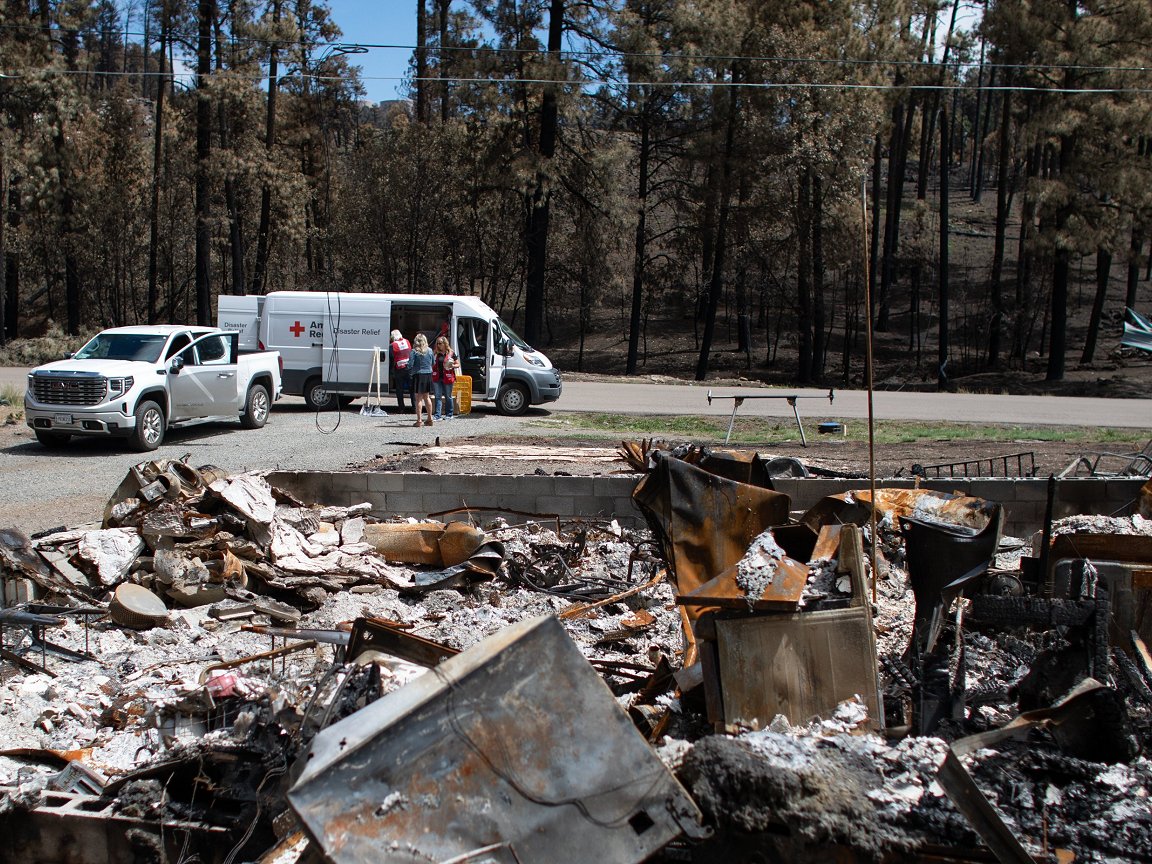
22 July 2024: ‘World’s hottest day’ culminates a month of heat and fire

By the Climate Centre
Last month saw the world’s hottest day in recent history, the World Meteorological Organization said yesterday, quoting an ECMWF dataset that goes back to 1940.
On 22 July 2024, the global thermometer reached an average of 17.16°C – “yet another unwelcome indication of the extent that greenhouse gases from human activities are changing our climate,” a WMO press release said. The following day was a near tie.
Global average temperatures have hit record highs for 13 consecutive months starting last June, and data for July 2024 will confirm whether this exceptional streak continues.
WMO Secretary-General Celeste Saulo said yesterday: “Widespread, intense and extended heatwaves have hit every continent in the past year. At least ten countries have recorded daily temperatures of more than 50°C in more than one location. This is becoming too hot to handle.”
She continued: “Climate adaptation alone is not enough. We need to tackle the root cause and get serious about reducing record levels of greenhouse gas emissions.”
The Copernicus Climate Change Service said a contributing factor behind the new daily record was temperatures as much as 10°C above average over Antarctica and the Antarctic Ocean.
Climate Centre Director of Programmes, Julie Arrighi, who also leads on work with extreme heat, said: ”We are witnessing temperature records being broken around the world, with no end in sight.
”It is essential that people and communities work to avoid the worst consequences of extreme heat by bolstering early warning systems, developing heat action plans, and ensuring access to protective measures such as drinking water, frequent breaks, cool spaces and emergency health services.”
Summer temperatures in southern winter
Among the July global hotspots reported by the WMO yesterday:
*Japan’s monthly average temperature was the highest in the instrumental record back to 1898, at 2.16°C warmer than the 1991–2020 average.
*China saw the warmest month in a record the goes back to 1961.
*India had its second warmest July on record, with minimum overnight temperatures being the warmest since 1901.
*Pakistan and Iran both suffered repeated heatwaves, with the latter forced to close schools because of the heat.
*A heatwave in Morocco included 47.6°C in Marrakech, after an unusually cool start to the month with the sudden contrast intensifying the heat stress on people.
*Many areas of the Mediterranean and Balkans were gripped by extended heatwaves, causing casualties and impacting public health. While France did not experience an exceptional month overall, its first heatwave of the year at the end of July affected athletes and spectators at the Paris Olympics.
*Half the US population were under heat alerts on 1 August, while nearly 100 “large active wildfires nationwide” were still burning, WMO said; the American Red Cross said on X/Twitter that more than 4 million acres had been burnt “across much of the West for several months”.
*As of 3 August, more than 800 fires were burning in Canada, “including more than 250 out of control”, with British Columbia and Alberta badly affected; the Canadian Red Cross has launched the 2024 Alberta wildfires appeal.
*In the South American winter, some countries recorded temperatures more typical of summer, even reaching 35°C in parts of Bolivia, Paraguay, Brazil, Uruguay and Argentina.
The American Red Cross has been helping shelter people who have been forced from their homes by wildfires in California, Idaho, Oregon and Washington during July, a record-breaking month of heat and fire. (Photo: ARC via social media)